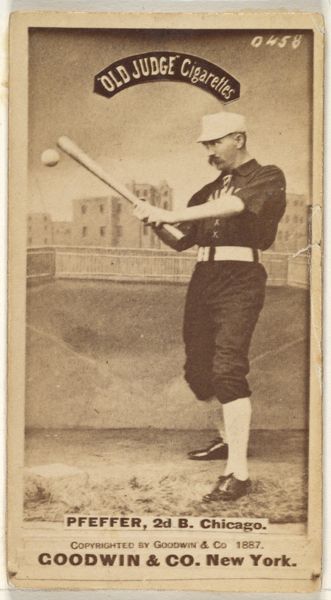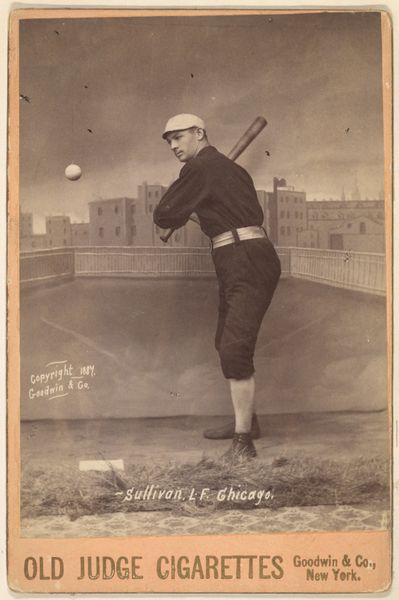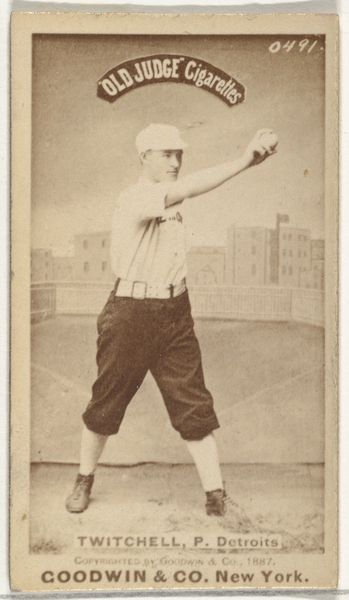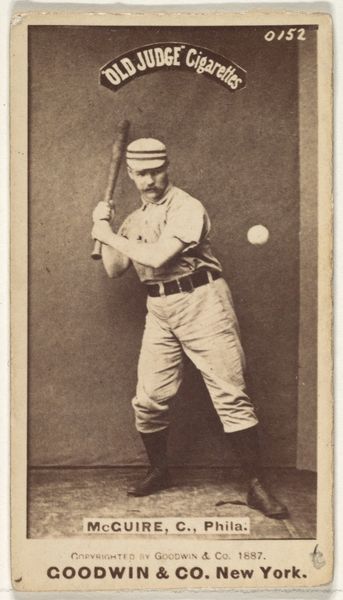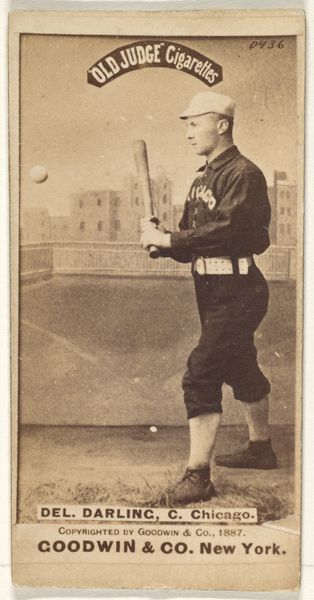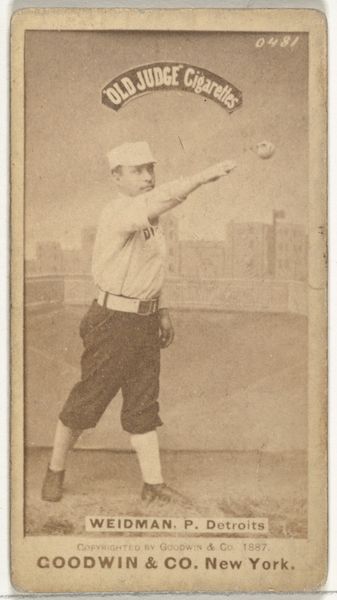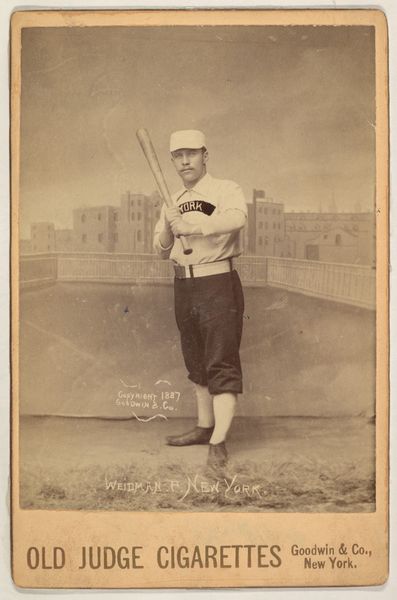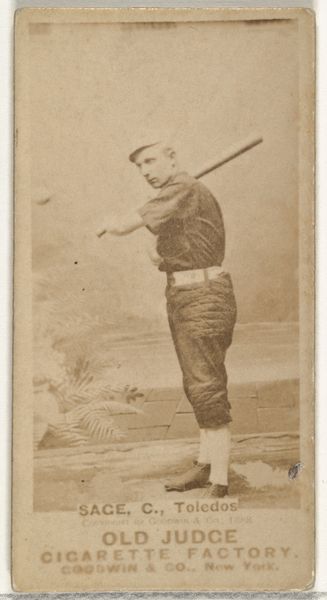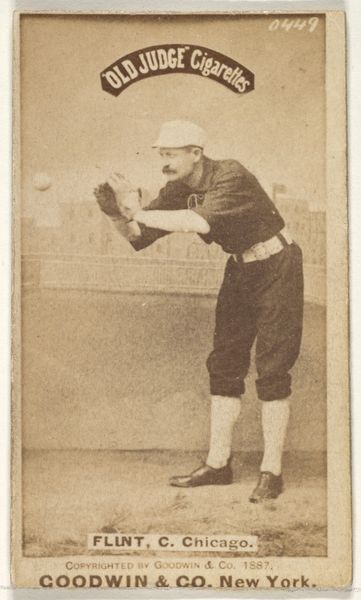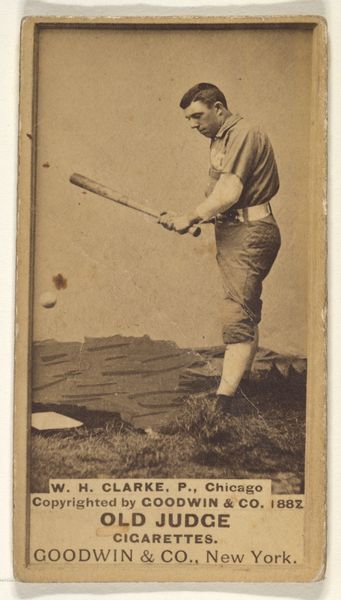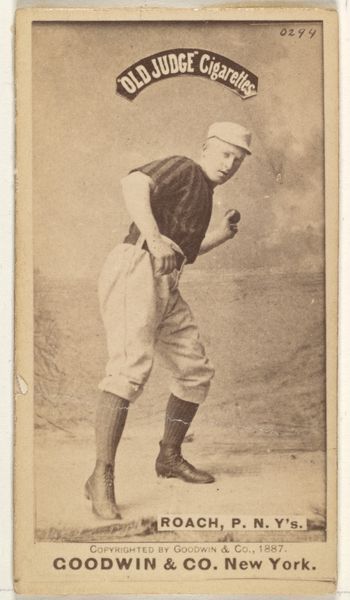
Sullivan, Left Field, Chicago, from the Old Judge series (N172) for Old Judge Cigarettes 1887
0:00
0:00
print, photography, albumen-print
#
portrait
# print
#
baseball
#
photography
#
19th century
#
men
#
athlete
#
albumen-print
#
realism
Dimensions: sheet: 2 11/16 x 1 3/8 in. (6.9 x 3.5 cm)
Copyright: Public Domain
Curator: Here we have a remarkable piece from 1887, an albumen print titled "Sullivan, Left Field, Chicago," part of the "Old Judge" series (N172) by Goodwin & Company, made for Old Judge Cigarettes. It’s a fascinating example of early baseball cards, now residing at the Metropolitan Museum of Art. Editor: My first thought is the sepia tone; it evokes a nostalgic feel. And the composition—so simple, really just a figure and the implied action. The scale is what surprises me; I didn’t expect it to be so small. It resembles an advertisement on a baseball card. Curator: Indeed! The purpose of these cards was promotional. Tobacco companies used them as inserts in cigarette packs to boost sales, targeting a growing audience captivated by the sport. The players, often local heroes, became figures of aspiration and, essentially, walking advertisements. Editor: Makes you consider the labor involved. Producing thousands, maybe millions of these cards – the photographers, the printers, the factory workers folding these into packs alongside cigarettes…it's all part of this ecosystem of production and consumption. Did the players receive anything for their image being used this way? Curator: That's a very pertinent question. Initially, it’s likely they received very little. As baseball evolved into a professional sport with stronger player unions, they would have more rights and leverage concerning their likeness, but at this time, the balance of power lay firmly with the companies. It speaks to the institutional forces shaping the early commodification of sports. Editor: Absolutely. And seeing the way it attempts to emulate traditional portraiture within an industrial mass-produced format challenges these neat divisions we sometimes make between "high art" and the culture of ephemera. It prompts one to question labor practices and who benefitted most from this cultural phenomenon. Curator: Precisely. The "Old Judge" series is interesting because it provides a window into the construction of celebrity and the burgeoning commercial landscape of late 19th-century America, revealing baseball not just as a game, but as a potent symbol molded by capitalist ambitions. Editor: Thinking about its creation brings to the forefront the artist, and subsequently, their equipment, techniques and materials used in photography to achieve this. It almost romanticizes tobacco usage by association with baseball, the "American pastime." It is a symbol of masculinity and hard work that creates an idea of who gets to enjoy sport and tobacco. Curator: In short, this modest baseball card opens a surprisingly large discussion about the commercial, social, and artistic dimensions of its time. Editor: Right. More than just baseball, this print shows us the convergence of material processes, labor, and emergent marketing strategies in shaping cultural icons.
Comments
No comments
Be the first to comment and join the conversation on the ultimate creative platform.
